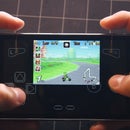Introduction: Flash Cotton (Nitrocellulose)
Nitrocellulose is one of the best materials to use for low budget special effects, or just to have fun! This flash cotton can be used in many ways (as seen in step 4), and all of them are amazing to watch! They also make for amazing light paintings! See the pictures in the last step for examples.
This is part 2 of a 3 part project. See the last step for a hint of the next part!
Warning: This instructable can be dangerous if the proper safety precautions are not followed. Please be aware that handling a strong acid, such as sulfuric acid, can cause significant harm. Also, the nitrocellulose should be used responsibly, not to intentionally harm another living being.
This is part 2 of a 3 part project. See the last step for a hint of the next part!
Warning: This instructable can be dangerous if the proper safety precautions are not followed. Please be aware that handling a strong acid, such as sulfuric acid, can cause significant harm. Also, the nitrocellulose should be used responsibly, not to intentionally harm another living being.
Step 1: Materials
Materials:
Tools:
| Sulfuric acid (H2SO4) | (Lowes, Amazon) |
| Potassium nitrate (KNO3) | (Lowes, Amazon) |
| Baking soda (NaHCO3) | (Grocery store, Amazon) |
| Cotton balls | (Local pharmacy, Amazon) |
Tools:
- Safety goggles (preferably slash-proof)
- Rubber gloves
- Plastic cups or other plastic/glass containers
- Marker
- Beaker
- Scale
- Pan
- Salt
- Ice
- Plastic/glass stirring rod (no metal!)
- Bucket
- pH strips (optional)
Step 2: Preparation
Step 3: Process
Step 4: Using It!
Now for the fun part!
Only a few of the uses for this amazing substance are listed here. Be creative and be safe!
Don't forget to comment if you liked it!
Sources: Nighthawkinlight
Only a few of the uses for this amazing substance are listed here. Be creative and be safe!
Don't forget to comment if you liked it!
Sources: Nighthawkinlight




